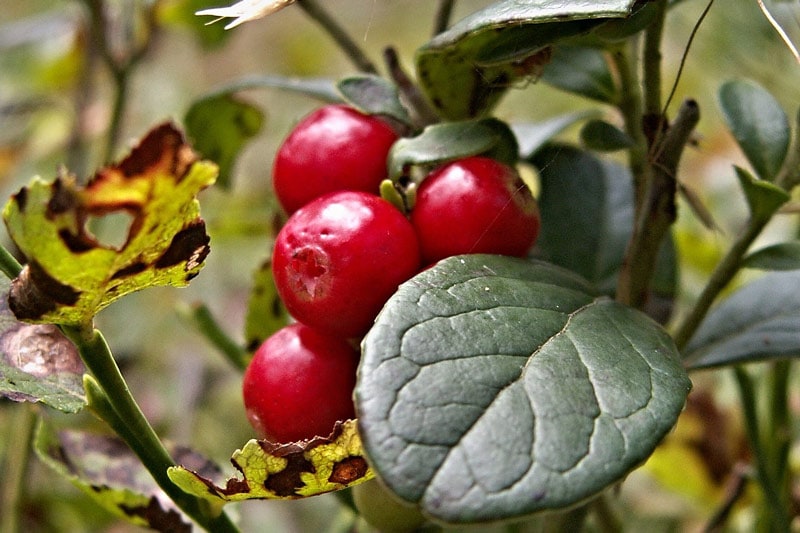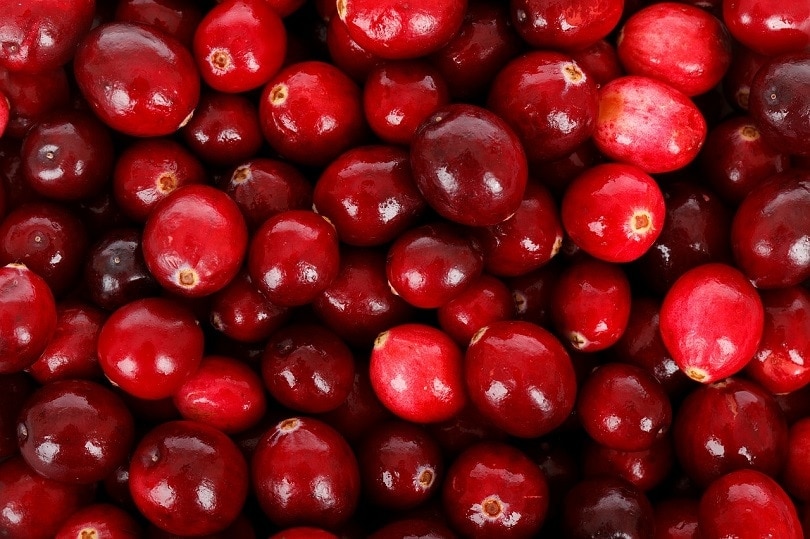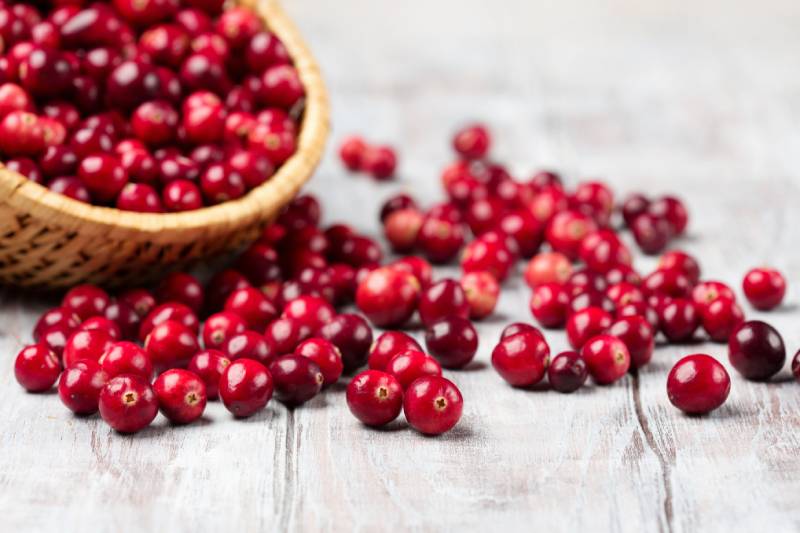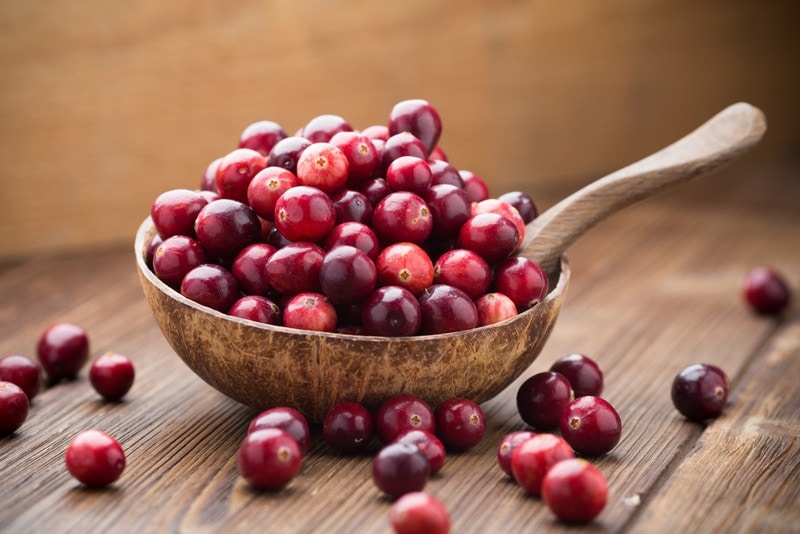9 Types of Cranberries (With Pictures)
-
Kristin Hitchcock
- Last updated:

Most people don’t know that there are several types of cranberries. However, many do exist, with some pronounced differences between them. There are over 100 varieties of cranberries, though not all of these are very popular.
As you’d imagine, all of these cranberries were developed for different reasons. Some of them only grow in certain areas, for instance. Others may have a particular taste or be used for a particular purpose.
Either way, choosing the best type of cranberry to plant in your garden is vital. You want to choose one that grows well in your area and produces fruits you use.
The 9 Types of Cranberries
1. Stevens Cranberries

| Year to Bear: | 1st |
| Mature Size: | 1–3 ft wide |
One of the most common cranberry varieties is the Stevens, a hybrid between the McFarlin and Potter. If you purchase an average cranberry plant for cultivation, you’re probably purchasing a Stevens.
This fruit ripens a bit earlier than other options. It also has a very high yield, and the fruit is exceptionally juicy. However, it is very low in pectin, which you should keep in mind if you plan on canning.
Many also love that this fruit is resistant to false blossoms and fruit rot. Therefore, it is pretty easy to take care of.
- Resistant to false blossoms and root rot
- Ripens early
- Easy to find
- Juicy fruit
2. Scarlett Knight Cranberries
| Year to Bear: | 1st |
| Mature Size: | Not listed |
The primary purpose of the Scarlett Knight was to be disease-resistant, and it fits in this niche quite well. It has a darker red color than most and is very sweet. Plus, the fruit ripens earlier than most. This plant is best known for its very large cranberries, which take up much of the harvest. Furthermore, due to their larger size, these plants have a relatively long shelf life.
This hybrid is a cross between a Stevens and another unpopular hybrid that doesn’t have a name. Therefore, this hybrid is newer and not as easy to find as other options.
- Very sweet
- Disease resistant
- Early ripening
- Long shelf life
3. Pilgrim Cranberries
| Year to Bear: | 1–2 years |
| Mature Size: | 6 inches high |
If you’re looking for a late-ripening variety, this is one of the most popular options. The berries are decently easy to keep, and they ripen later than most. Therefore, this plant allows you to eat fresh fruit later in the season. The plant is also moderately frost resistant, so it does better when planted later.
The berries are juicy and low in pectin. Therefore, they work well in commercial settings. The plants are known for producing pretty large berries in large amounts.
- Large, juicy berries
- Ripens late
- Frost resistant
- Low in pectin
4. McFarlin Cranberries

| Year to Bear: | 3–5 years |
| Mature Size: | Not Listed |
This variety was sourced from the wild in the late 1800s. Since then, it has been utilized in creating many other hybrids, many of which appear on this list. This plant is resistant to false blossoms and produces enormous fruits. They ripen later than most varieties, as well.
Today, this plant is extremely easy to find. However, as more varieties are created, it is no longer one of the most popular options. Therefore, it may be more difficult to find at your average garden center.
- Resistant to false blossoms
- Heirloom
- Ripens later
- Produces large fruits
5. Howes Cranberries
| Year to Bear: | 2nd |
| Mature Size: | 12 inches high |
The Howes cranberry is pretty popular. It was also sourced from the wild at a very early period when it was selected by settlers for cultivation. Therefore, this plant is widespread and pretty easy to find. It has also contributed to the creation of other hybrids over the years.
This plant produces very firm fruit that stores well. Therefore, it is commonly utilized for commercial use, though this is also beneficial to the home gardener.
Furthermore, this plant is also resistant to false blossoms and fruit rot.
- Easy to find
- Firm fruit
- Resistant to false blossoms and fruit rot
6. Franklin Cranberries
| Year to Bear: | 3–5 years |
| Mature Size: | Not Listed |
This newer hybrid is a cross between the Howes and Early Black, which is another common cranberry type. The Franklin is often chosen because of its high pectin content. Therefore, it can make delicious cranberry sauce, unlike most options on this list.
The fruits are very glossy and ripen early. Plus, they store well and produce more seeds than most other varieties. This plant also produces very few runners, making them easier to control.
- Resistant to false blossoms
- Produces extra seeds
- High in pectin
- Produces few runners
- Ripens early
7. Early Black Cranberries

| Year to Bear: | 3–5 years |
| Mature Size: | Up to 2 ft |
This variety has a long history. You can find tons of information about this variety on the internet. Typically, it ripens early before the first frost date and produces a subtlety sweet berry. The berries are small and dark red, resembling what most people think when they hear “cranberries.”
This plant isn’t susceptible to soil type, so you can plant it in more places than others. However, it does produce fewer berries than most types, primarily because it is so old. It hasn’t been bred for production like many cranberry varieties out there.
On the other hand, this plant produces a lot of runners. You’ll need to trim it back often. However, this also makes it easy to produce lots of plants.
This plant is very susceptible to fungal disease as it doesn’t have the genetics of many modern varieties. Therefore, some sort of fungicide spray is recommended.
- Easy-to-store fruits
- Older variety
- Ripens early
- Small, sweet berries
8. Crimson Queen Cranberries
| Year to Bear: | 2nd year |
| Mature Size: | Not Listed |
This hybrid was released in 2006, but it has established itself as a favorite. It produces substantial yields consistently and tends to bloom a bit earlier than other varieties. You can also find a similar variety called “Crimson King” that has many of these same benefits.
For the most part, this variety is extremely similar to Stevens and Ben Lear. However, its slightly different blooming times may make it better in certain areas.
- Large yield
- Early blooming time
9. Ben Lear Cranberries
| Year to Bear: | 1–2 years |
| Mature Size: | 6 inches high |
This variety was one of the last ones to come from the wild, as it wasn’t discovered until 1901. However, it wasn’t popularized until the 1990s, when it was published in a book about cranberries.
This type produces very large and deep red fruit. It is known for being extremely productive, which is often why it is chosen.
However, this type wasn’t prevalent for a long time, and it can still be challenging to find in many cases. Usually, the plants available are direct clones from the original wild plant.
- Large fruits
- Extremely productive
- Wild variety
Conclusion
The sheer number of cranberry plants out there today can make anyone’s head spin. If you’re trying to narrow down your hunt to a variety or two, it can be challenging. Luckily, most varieties are either early or late bloomers. Therefore, by deciding on what type you want, you can effectively cut the number of contenders in half.
Then, you have differences in pectin level. Pectin doesn’t make for good eating fruits, but it does make great sauces. Therefore, it depends on what you plan on using the fruits for. You also have differences in berry size and taste, which can be used to further narrow down the contenders
Featured Image Credit: zdenet, Pixabay
Contents
